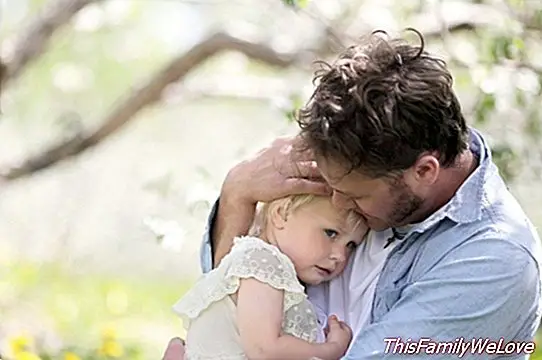Infantile convulsions: blocked by crying

The seizures they constitute, at any age, one of the most alarming and spectacular clinical manifestations. They usually occur in children of clear nervous constitution because of a punishment, a refusal, an unfulfilled desire or, also, because of febrile processes.
It is called convulsion to the abrupt and involuntary contraction of a muscle group. Generally, it is caused by an electrical discharge from the central nervous system, from the brain, and the contraction can be limited to a few muscles like those of the face or those of a limb, although it is more usual to generalize by appearing shakes of the whole body.
A generalized seizure is usually accompanied by the relaxation of the urinary and digestive sphincters so the patient has an involuntary emission of urine and feces. Also, and due to the contracture of the muscles of the throat, the saliva leaves the outside.
In almost all cases of generalized seizure There is simultaneously a loss of consciousness that can last for a longer or shorter period even after the muscle convulsion has ceased.
Crying spasms
The spasms of crying are very frequent in childhood, although there are in them several degrees that it is necessary to know. When the process is complete, its development is like this: the child, usually under five years and of clear nervous constitution, begins to cry for any cause, a blow, a punishment, a desire or dissatisfied caprice.
In a few moments he expels all the air and remains momentarily without breathing; is what grandmothers often describe as the child "gets enchanted" or "it is deprived". Usually after a few seconds, which can be eternal for the relatives who witness the access, the child recovers the breath with a deep inspiratory movement.
But at other times, lack of breathing is prolonged enough to affect the brain; in those cases the child shows purple lips and begins to have jerks of arms and legs, which is the real spasm. In any case, the recovery is almost immediate and the child returns to normal activity as if nothing had happened and never presented any sequelae of such a spectacular episode.
Tranquility first of all
The first paternal action, perhaps the most difficult one, must be to maintain an atmosphere of tranquility in the home, because it is well demonstrated that most of these children belong to families in which there are one or more parents of nervous constitution.
The second consists of do not let yourself be "blackmailed" for the child and his crises. The child, instinctively or consciously, perceives the dominance exercised over their parents and will henceforth use the simple threat of crying to get whatever they want from them.
Once the crying has started, if the child "gets enchanted", he should be stimulated with gentle strokes on the back or by wetting his face with cold water or blowing on it. If, however, the seizure is reached, the child will be placed in a comfortable place where he can not hit himself with any object. The crisis lasts only a few seconds.
It is not an epilepsy
When the seizures are repeated in any period of time we can speak of epilepsy although to give this qualifying diagnosis it is necessary to confirm that there is a zone of the brain, or all of it, that periodically performs those abnormal electric discharges.
Precisely the lack of this information in the main seizures that occur during childhood-febrile convulsions and spasms of crying or sob-is what makes them not included among epileptic disorders.
How to act in the face of a seizure
In both typical and atypical seizures, two general measures have to be taken during their appearance:
- Place the child in a comfortable place and avoid being hurt with violent shaking: undoing the clothes, inserting between the teeth some object that prevents the bite of the tongue by the mandibular contracture.
- Lower the temperature, either by physical means - compresses of cold water or alcohol on the forehead, extremities and in the folds and folds of these - or antipyretic medications.
José Ignacio de Arana. Doctor of medicine and surgery. Specialist in Pediatrics and Childcare




